Landscape maintenance in autumn: an itinerary
22 Sept. 2022 Landscaping & Turfcare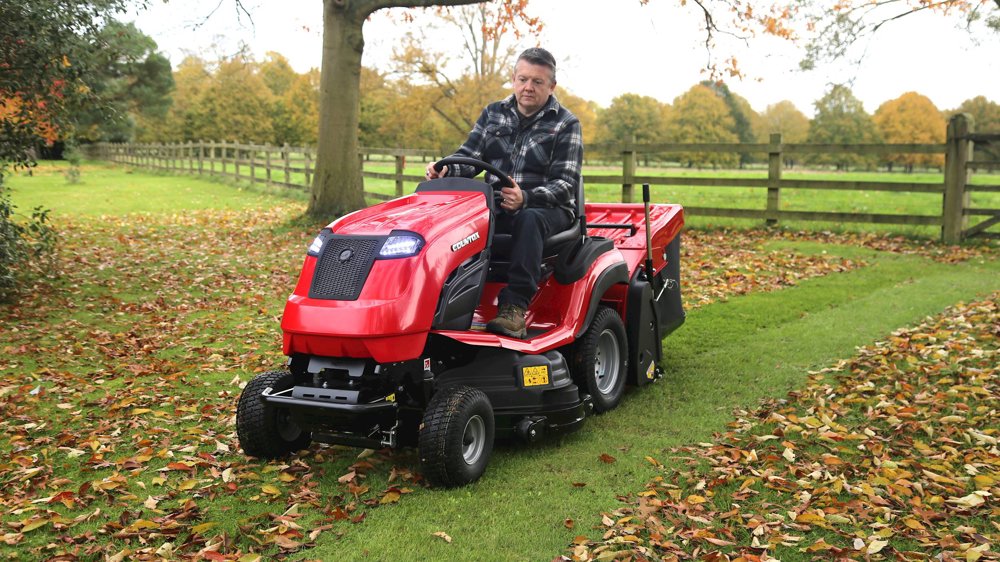
Autumn is a season of transition. In the landscaping and lawn care community, it’s a time for recovering from the heat of summer, making the necessary preparations for winter, and, of course, dealing with fallen leaves.
Your schedule may not be as jam-packed as it was in July, but as you will undoubtedly know, autumn is still a busy period for professional landscapers.
Measure up your own autumn itinerary to that of other landscape professionals, as we run through the typical schedule for the season, including a look into ideal timings and the best tools for the job.
Autumn across Europe
Temperate climates, as in Northern Europe, require a different approach to Mediterranean climates in autumn. If you’re in Southern Italy, scarifying, aerating and top dressing a lawn in autumn may seem counterproductive – it’s a task for spring. In Scotland, these tasks are perfect for autumn.
As we cover the typical autumn tasks for a professional landscaper, we will identify which jobs are relevant to different climates across Europe.
An autumn itinerary
No month in autumn is busier than September. After the scorch of summer, it’s time for some much-needed care and attention. Landscapers have a short window to revitalise a withered lawn, plant bulbs and shrubs and prepare for winter.
It’s a period that often carries into early October, as the weather is usually still warm and dry enough to take on autumn’s most pressing tasks without being – quite literally – bogged down. Once the rain sets in, the opportunity has passed; any other mild-weather tasks you had planned now wait until spring.
These are a few of the tasks that occupy the typical landscaper’s autumn – and the best equipment to deal with them.
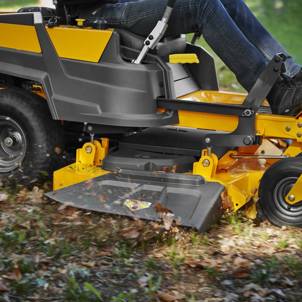
Leaf clearance
No autumn itinerary is complete without a mention of fallen leaves. Leaf clearance is one of those arduous tasks that becomes an endless cycle at this time of year. Though the exact timing fluctuates, once leaves begin to fall, it’s a job that requires constant clean-up.
There’s nothing you can do to avoid this task – you know you will need to clear away leaves in the autumn, that much is obvious. But are you currently implementing the most efficient way to do so?
At a basic level, a rake can suffice. For anything larger than a small garden, however, this is back-breaking work that would take days to complete; as we all know, by the time you’ve finished one area and moved to the next, a fresh layer of leaves will have settled on the ground. A leafblower is a great tool that can make your life easier, but still requires more physical labour than other options.
For those dealing with larger spaces, a lawn tractor makes clearing leaves effortless: simply attach a leaf sweeper to the back and you can clear away leaves without breaking a sweat. It’s an investment for a landscaper that can quickly pay dividends, as the versatility of lawn tractors makes them a great choice for all seasons: whether you’re sweeping leaves, clearing snow or spreading fertiliser.
General lawn maintenance
Though it begins to slow, autumn is still a time of growth for grass. The season marks the last chance in a calendar year to treat the grass before winter. It’s a critical period for repairing the damage over the summer, giving a lawn its best chance to thrive the following spring.
Autumn lawn treatments range according to the type of grass, soil and climate you are in; while landscapers across Europe will conduct lawn treatments as part of their itinerary, they will all be slightly different according to location and preference.
Gradually begin to mow at normal pre-summer heights
A sure sign autumn is setting in is feeling the need to adjust your mowing settings. We keep grass levels higher in the summer to protect them from the impact of intense heat, but when temperatures start to cool, this is of course lowered. Ideally, you will never need to cut more than a quarter of the total height of the plant at once; as we all know, cutting too much can be harmful.
A reliable ride-on mower is one of a landscape gardener’s essential pieces of equipment; ensuring the blades are sharp and the engine is maintaining a healthy pace will help you achieve a cleaner cut. For a mower that can maintain cutting speeds through tough turf and variable conditions, look for a Kawasaki EFI engine: these powerful engines provide an effortless mowing experience even through long grass and over uneven terrain, ensuring they always deliver the cleanest cuts.
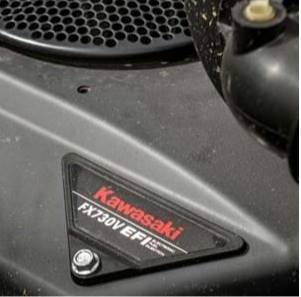
Feed the lawn
Fertilising the lawn in autumn helps it to recover from summer, and shields it from some of the damage of winter. In Mediterranean climates in particular, where scarifying and top dressing will often wait for spring, feeding the lawn is one of the most important tasks in autumn. You will want to hit that sweet spot between the heat of summer and the sudden drop in temperatures; monitoring soil temperatures regularly ensures you are able to treat the lawn at the perfect time.
Weeding
Where lawn growth starts to slow, many weeds are only kicking into gear. Treating the lawn for weeds is just as important in autumn as it was in summer – as landscapers know all too well, if left ignored, weeds will quickly swamp a lawn and make your life immensely more difficult.
Repairs and fixing bare patches
It’s a great time of year to close up any bare patches that have appeared over the summer, breaking up the soil and seeding the ground or simply laying new turf. In a similar vein, uneven ground can be easily levelled in early autumn.
Test the soil
While some experienced landscapers will feel that they are able to judge the needs of a lawn without testing it, others swear by the process. Analysing the pH of the soil, its moisture content, nutrients and any contaminants helps us to provide exactly what the lawn needs, taking guesswork out of the equation.
Testing the soil in autumn gives you a headstart on the spring rush, and allows you to squeeze in an autumn lawn treatment that will ensure the grass is primed for spring.
Pruning
Autumn is a great time to remove old growth for many plant types. Landscapers will often fill part of their calendar in October pruning many types of trees, roses and shrubs. It’s also a great time to trim many hedge plants; though this varies, as trimming coniferous hedges in late autumn, for example, can risk developing bare patches vulnerable to frost.
To handle pruning, hedge trimming and a variety of other tasks, a good multi-tool is a versatile addition to your toolkit. With multiple attachments available, you can choose the equipment best suited to your business. Unsure what to look for in a multi-tool? Check out our guide to find your perfect match.
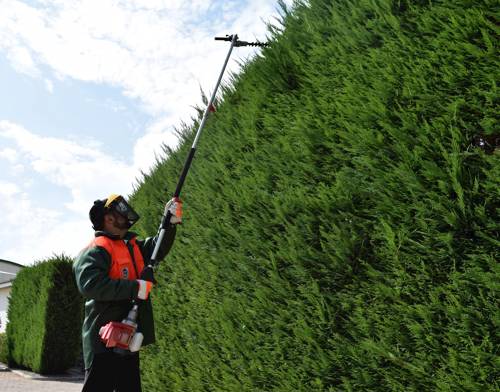
Weed and bramble cutting
Summer is so busy that you hardly have time to think. Autumn gives you a chance to catch up with some of those heavy-duty, physically intensive jobs that were made to wait in summer.
It’s an ideal time to cut back the summer growth and fight the spread of weeds. Brambles in particular are rampant growers, causing havoc all across Europe with the quick spread of strong vines and sharp thorns. As any landscaper can tell you, if left to grow, they quickly get out of control. A reliable brushcutter can cut through brambles, long grass, weeds and small hedges to help make your life easier: to find out more, read our guide to buying the best brushcutter.
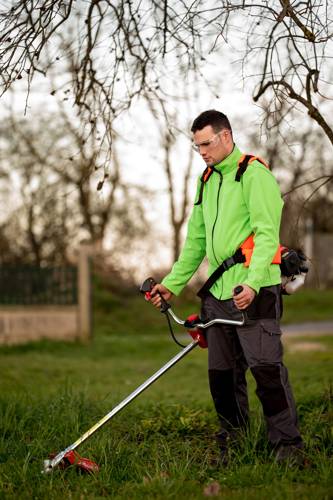
Planting shrubs and trees
Autumn’s warm, moist soil and cooler temperatures are the perfect recipe for planting shrubs and trees. Autumn is the best time to plant for root development, and gives shrubs and trees that all-important additional season of growth before the heat of summer sets in.
Whether you’re looking to plant an olive tree in Italy, a eucalyptus tree in Spain, an ash tree in France or a yew tree in England, you’ll find that the best results usually come from autumn season planting.
Mediterranean vs temperate climates
In a Mediterranean climate, autumn landscaping isn’t quite so lawn-focused. There are still jobs that need to be done on grass, but the lion’s share of the work occurs in spring. Autumn is a season for planting, pruning and debris-clearing, with lawn maintenance leaning towards general rather than specialised.
In temperate climates, however, you will often find that some heavy-duty lawncare takes place, including:
Scarifying
Scarifying is very location dependent; some landscapers will swear by the process in the autumn, others insist it’s best in spring or early summer, when the grass has strong growth. Neither are necessarily wrong – as mentioned earlier, a lawn in Scotland will need a very different approach to a lawn in Southern Italy.
The rejuvenating process of removing thatch and dead grass allows nutrients to reach the lawn below it, and is an especially important procedure for areas that regularly deal with moss and heavy thatch. Late August or early September is the best time for autumn scarification, as the patches created by the process are less likely to grant opportunities for weeds to spread, and the soil is still viable for growing seeds.
Aeration
Putting small holes into the lawn, i.e. aeration, is vital in providing the lawn space to breathe, and gives it that extra bit of drainage in time for winter.
Top Dressing
To round out your scarifying and aeration process on the lawn, landscapers typically finish with top dressing. Testing the soil is the best way to figure out the exact top dressing material best suited to your lawn.
Ready for autumn?
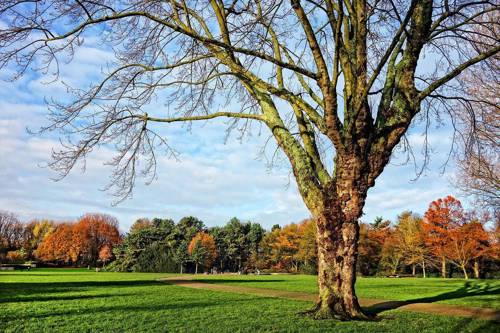
Our climates are different, but many landscapers in Europe have virtually the same schedules when September rolls around. Besides the need for scarifying, aeration and top dressing in northern Europe, autumn itineraries on the continent follow the same leaf-clearing pattern.
One thing all landscapers in Europe certainly have in common is the need for high-quality, reliable equipment. Ensuring you have the best tools for the job at hand goes a long way in making your life easier, and your business successful. Whether it’s autumn, spring or summer, having equipment you can rely on is a guarantee to sail through your busy schedule.
You may be interested in
-
Die berühmtesten grünen Oasen Europas

-
Rasen vertikutieren und anschließend wieder frisch machen

-
Welches sind die grünsten Länder Europas?

-
Rasen wetterfest machen und gegen Staunässe, Frost und Trockenheit schützen

-
Landscaping trends for 2024

-
Kennen auch Sie diese Mythen rund um die Landschaftspflege?







